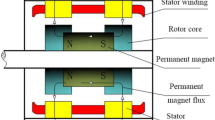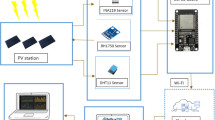Abstract
This paper is devoted to automating the development of standalone scientific visualization modules based on systems on chips with custom tangible user interfaces. Modules of this type can be used as interactive exhibits in the so-called smart museum. The basic idea of the automation lies in software generation leveraged by the SciVi ontology-driven platform. By extending the underlying ontologies of SciVi, we enable this platform to generate code for the Raspberry Pi and Orange Pi systems on chips. The algorithms for the generated software are described in the SciVi platform by means of a high-level visual programming language based on data flow diagrams. Scientific visualization support in the generated software is based on hardware graphics acceleration implemented via OpenGL ES API. Tangible user interface support is implemented by linking special libraries and utilizing operating system APIs to interconnect the system on a chip with its peripheral devices. The effectiveness of the proposed approach is confirmed in practice by developing several cyber-physical museum items for the “Transmutations” exhibition in the Kidsmuseum, a branch of the Perm Regional Museum (Perm city).




Similar content being viewed by others
REFERENCES
Chianese, A. and Piccialli, F., Designing a smart museum: When cultural heritage joins IoT, Proc. 3rd Int. Conf. Technologies and Applications for Smart Cities (I-TASC), 2014. https://doi.org/10.1109/NGMAST.2014.21
Manakov, D.V., Visual analytics and data abstraction models, Proc. 28th Int. Conf. Computer Graphics and Vision (GraphiCon), Tomsk, 2018, pp. 146–150.
Ryabinin, K.V. and Kolesnik, M.A., Adaptive scientific visualization tools for a smart paleontological museum, Program. Comput. Software, 2019, vol. 45, no. 4, pp. 180–186. https://doi.org/10.1134/S0361768819040066
Ryabinin, K.V., Kolesnik, M.A., Akhtamzyan, A.I., and Sudarikova, E.V., Cyber-physical museum exhibits based on additive technologies, tangible interfaces and scientific visualization, Sci. Visualization, 2019, vol. 11, no. 4, pp. 27–42. https://doi.org/10.26583/sv.11.4.03
Ibanez, L., Raspberry Pi likes VTK, 2012. https://blog.kitware.com/raspberry-pi-likes-vtk.
Buscher, N., Ojeda, A., Francoeur, M., Hulyalkar, S., Claros, C., Tang, T., Terry, A., Gupta, A., Fakhraei, L., and Ramanathan, D.S., Open-source Raspberry Pi-based operant box for translational behavioral testing in rodents, J. Neurosci. Methods, 2020, vol. 342. https://doi.org/10.1016/j.jneumeth.2020.108761
Rossetti, V., Furfari, F., Leporini, B., Pelagatti, S., and Quarta, A., Enabling access to cultural heritage for the visually impaired: An interactive 3D model of a cultural site, Procedia Comput. Sci., 2018, vol. 130, pp. 383–391. https://doi.org/10.1016/j.procs.2018.04.057
Diallo, A.D., Gobee, S., and Durairajah, V., Autonomous tour guide robot using embedded system control, Procedia Comput. Sci., 2015, vol. 76, pp. 126–133. https://doi.org/10.1016/j.procs.2015.12.302
Ryabinin, K.V. and Chuprina, S.I., Using scientific visualization systems to automate monitoring of data generated by lightweight programmable electronic devices, Program. Comput. Software, 2018, vol. 44, no. 4, pp. 278–285. https://doi.org/10.1134/S0361768818040102
Ryabinin, K., Chuprina, S., and Belousov, K., Ontology-driven automation of IoT-based human–machine interfaces development, Lect. Notes Comput. Sci., 2019, vol. 11540, pp. 110–124. https://doi.org/10.1007/978-3-030-22750-0_9
KNIME official website. https://www.knime.com.
Blender 3D official website. https://www.blender.org.
Allen, J.A., The influence of physical conditions in the genesis of species, Radical Rev., 1877, vol. 1, pp. 108–140.
Barros, C., MatCap: Render and art pipeline optimization for mobile devices, 2019. https://medium.com/playkids-tech-blog/matcap-render-art-pipeline-optimization-for-mobile-devices-4e1a520b9f1a.
Chuprina, S. and Nasraoui, O., Using ontology-based adaptable scientific visualization and cognitive graphics tools to transform traditional information systems into intelligent systems, Sci. Visualization, 2016, vol. 8, no. 1, pp. 23–44.
ACKNOWLEDGMENTS
We are grateful to S.L. Ostrovskii and U.Sh. Sairanova for the opportunity to participate in the creation of the “Transmutations” exhibition. We are also grateful to A.S. Koshelev for his help in designing the frames of the cyber-physical exhibits.
Author information
Authors and Affiliations
Corresponding authors
Additional information
Translated by Yu. Kornienko
Rights and permissions
About this article
Cite this article
Ryabinin, K.V., Kolesnik, M.A. Automated Creation of Cyber-Physical Museum Exhibits Using a Scientific Visualization System on a Chip. Program Comput Soft 47, 161–166 (2021). https://doi.org/10.1134/S0361768821030099
Received:
Revised:
Accepted:
Published:
Issue Date:
DOI: https://doi.org/10.1134/S0361768821030099




